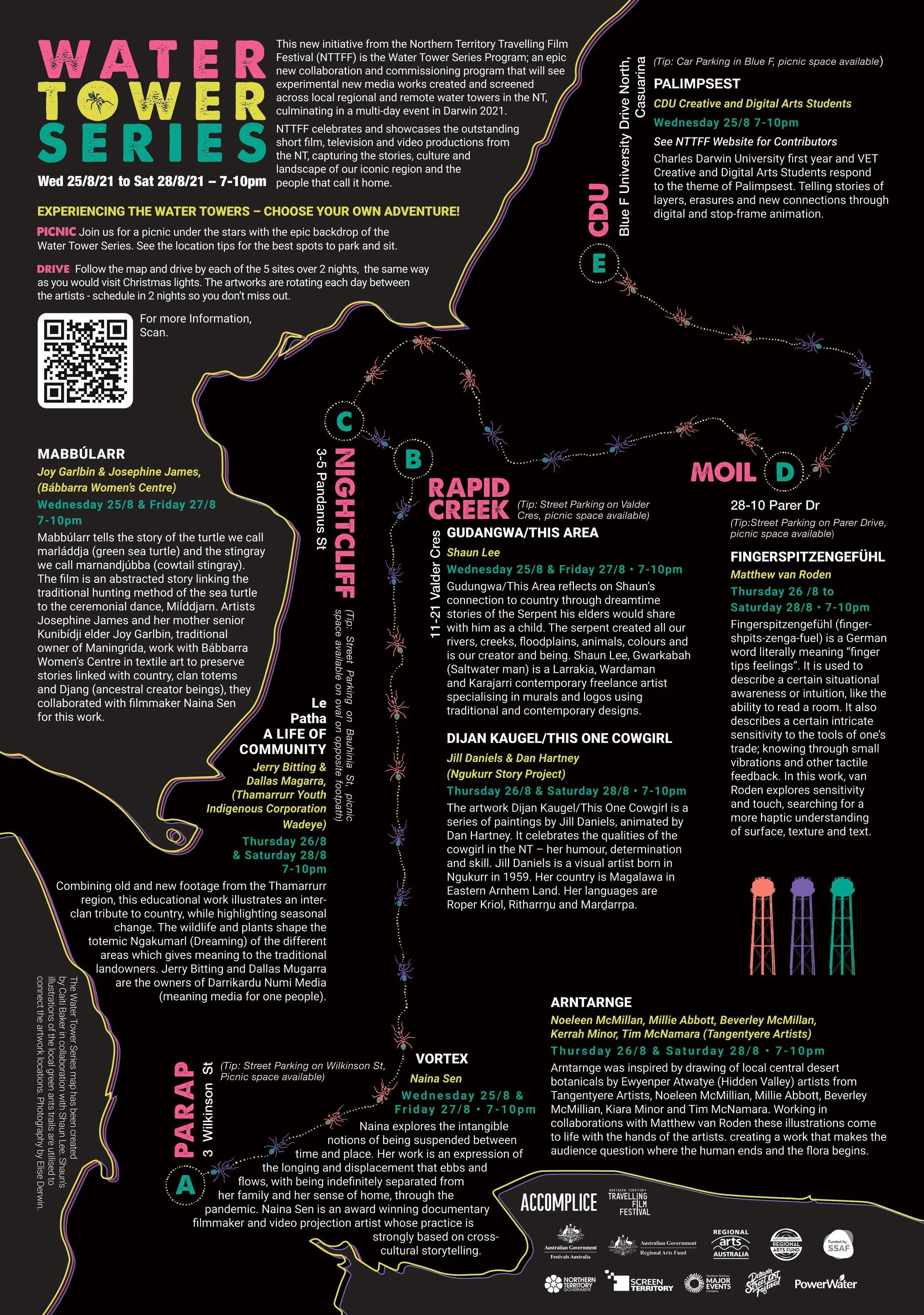Water Towers as Kin
Artefacts as Encounters
This exhibition emerges from a series of encounters — fleeting, intimate, public, and quiet — with the water towers that punctuate the skylines of Darwin and Palmerston. These towers, often overlooked or instrumentalised, become here relational sites: places of memory, heat, resilience, and unexpected kinship.
The artefacts gathered — images, videos, marketing fragments, and shared stories — are not static representations. They are traces of meetings: between body and structure, light and concrete, stranger and neighbour. Each one holds the residue of a moment where attention was paid, where the towers were seen, felt, questioned, or reimagined.
Artefacts in Flux
These materials are not complete or closed. They shift meaning depending on who encounters them, when, and in what context, and under what weather or mood. A flyer becomes a memory prompt. A video becomes a rhythm. A photograph becomes a conversation. These artefacts remain in flux — open to reinterpretation, refusal, or resonance — much like the towers themselves, which weather storms, collect time, and bear witness to change.
Their presentation here honours that instability. Rather than a fixed archive, this is a holding space: a space to dwell, to return, to see again with new eyes.
An Arendtian Ethos
This work is grounded in an Arendtian ethos — one that values plurality, publicness, and the everyday rhythms of life. To engage with the towers as kin is to resist their abstraction or commodification. It is to honour them not only as infrastructure, but as participants in a shared world — standing among us, shaping the contours of our days.
Inspired by Hannah Arendt’s commitment to dialogue, accountability, and the sustenance of public space, this exhibition resists closure. It leans into complexity, contradiction, and care. It invites you to consider how kinship might be extended not just between people, but with the structures, stories, and places that sustain us — especially those that seem most silent or unseen.
Curatorial Note: Holding the Tower Lightly
This exhibition is not arranged by chronology or theme, but by resonance. You’ll find artefacts in proximity, not in order — forming constellations of mood, memory, and perspective. Marketing materials and public photographs sit beside quiet domestic reflections. Tower images captured in haste rest next to composed video portraits. Each is offered not as proof, but as part of an unfolding conversation.
We invite you to move slowly, to return, to listen across difference. Let the artefacts meet you where you are — and shift shape as they go.
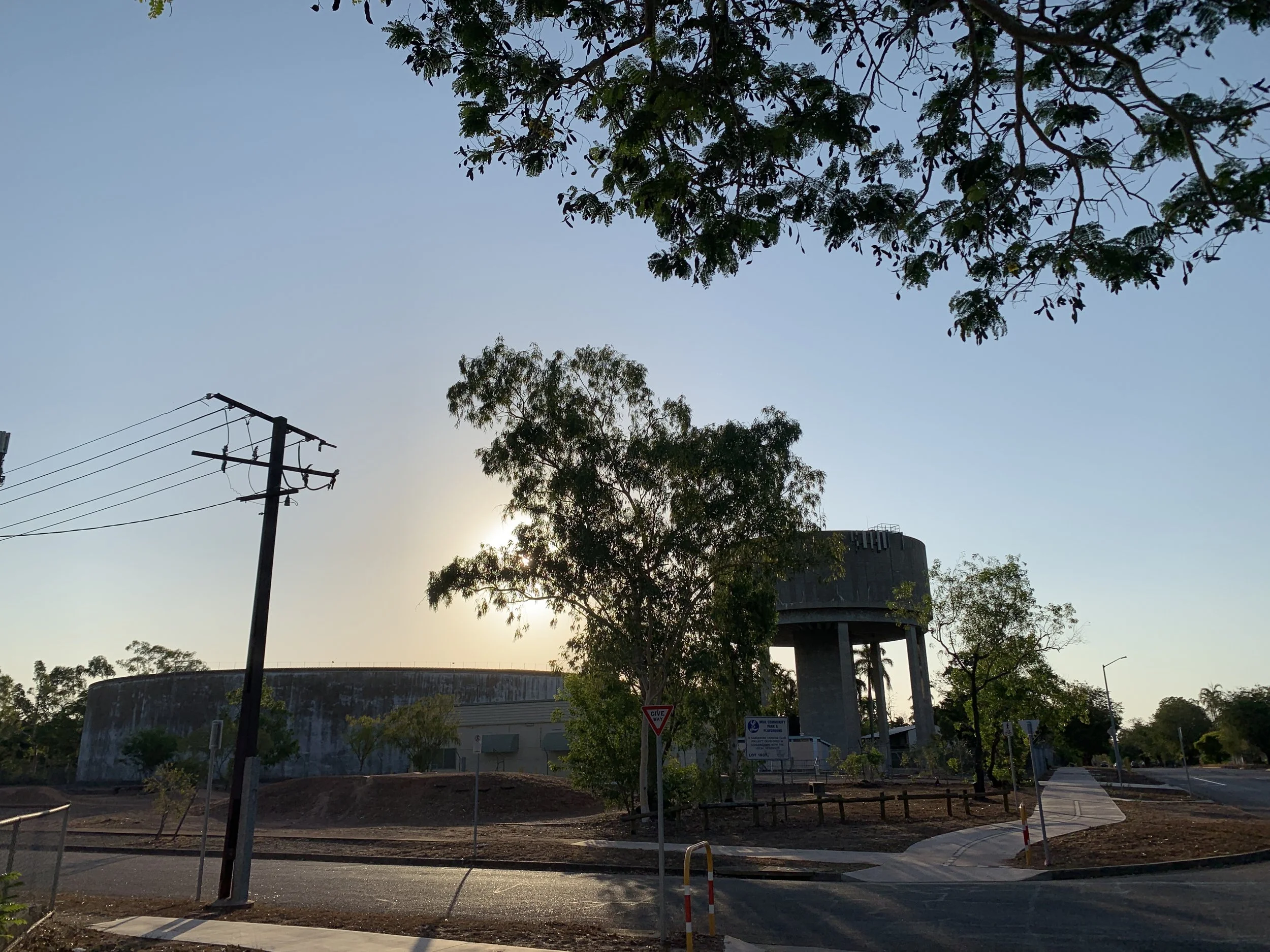

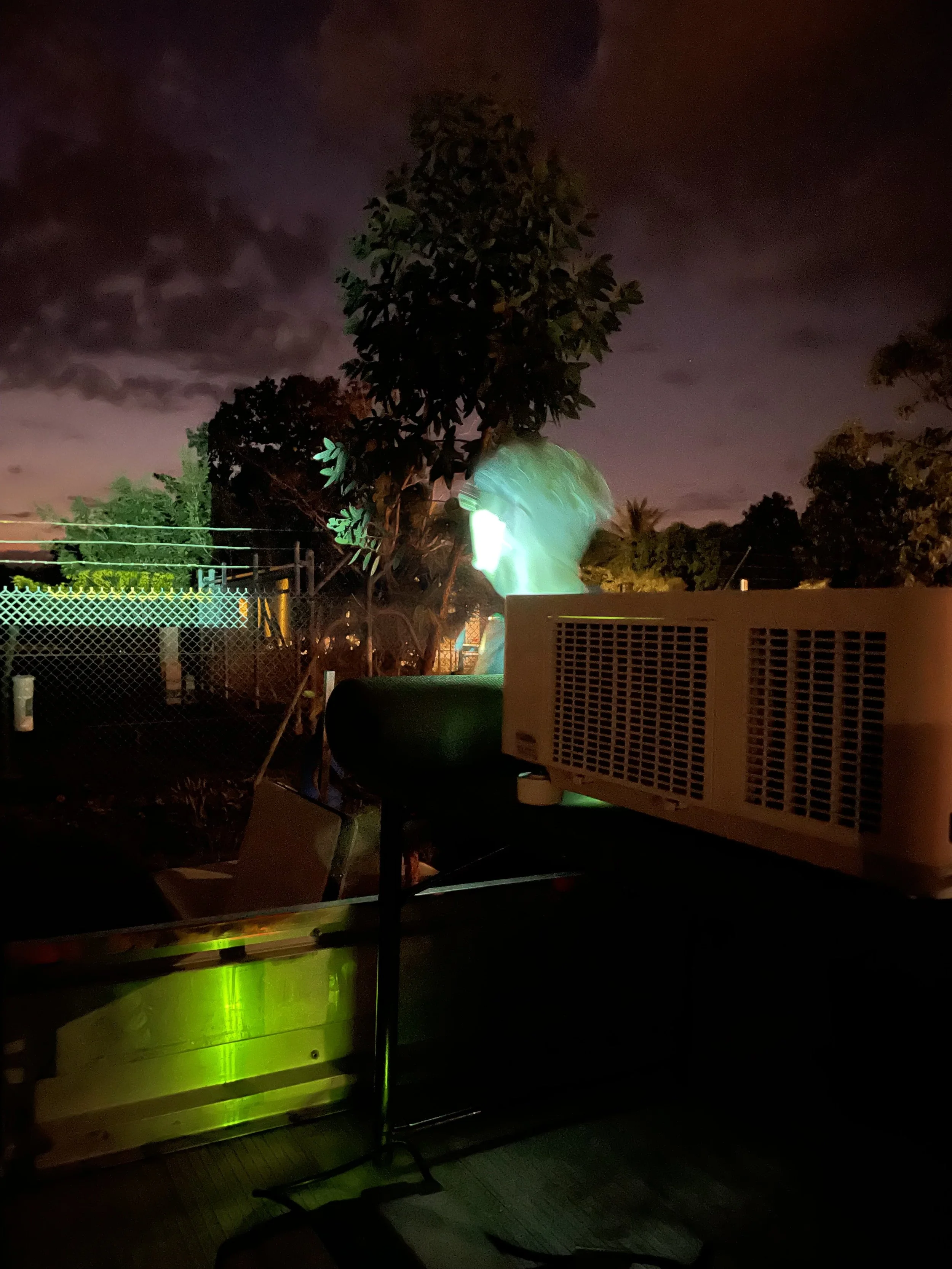



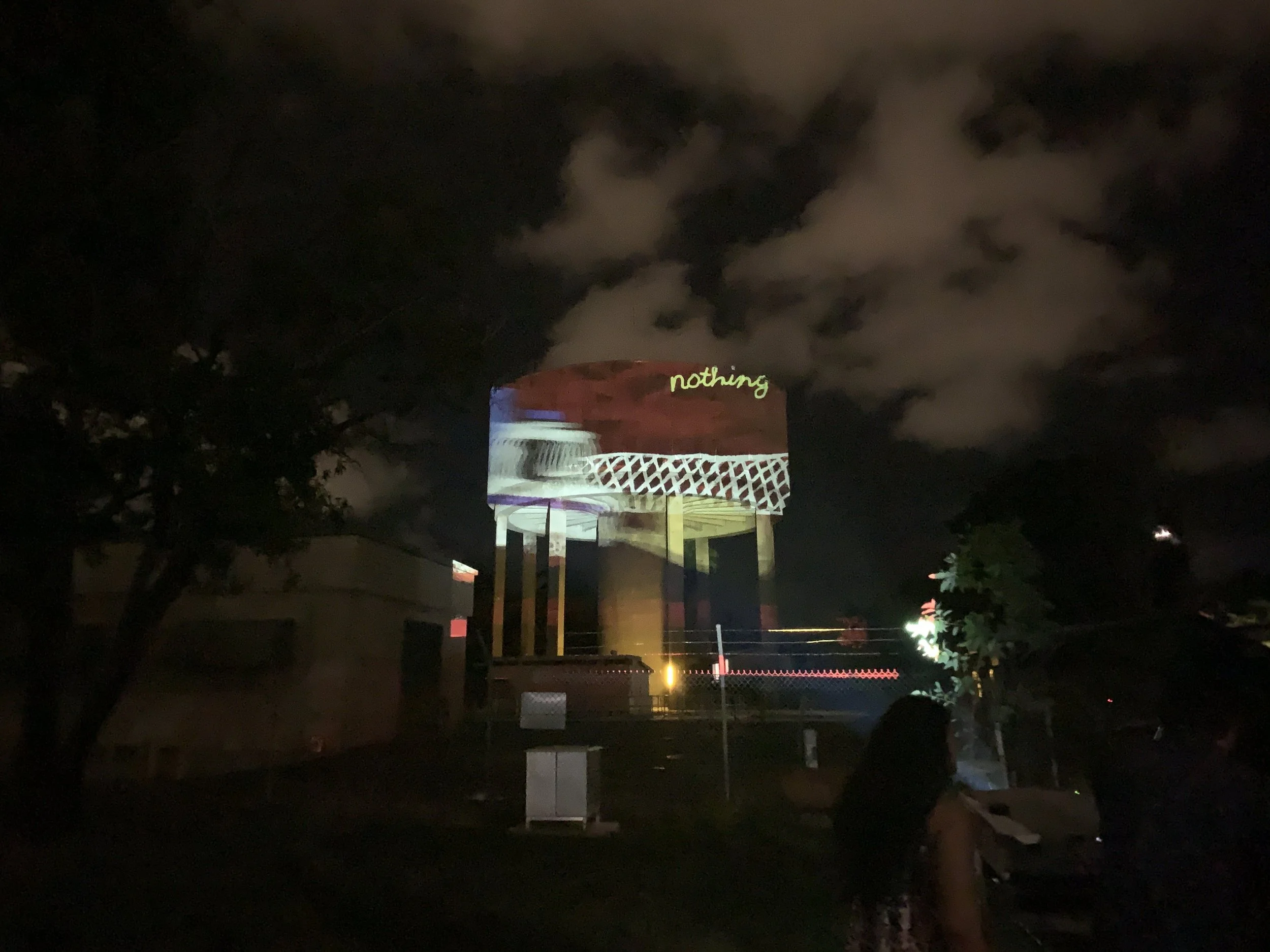
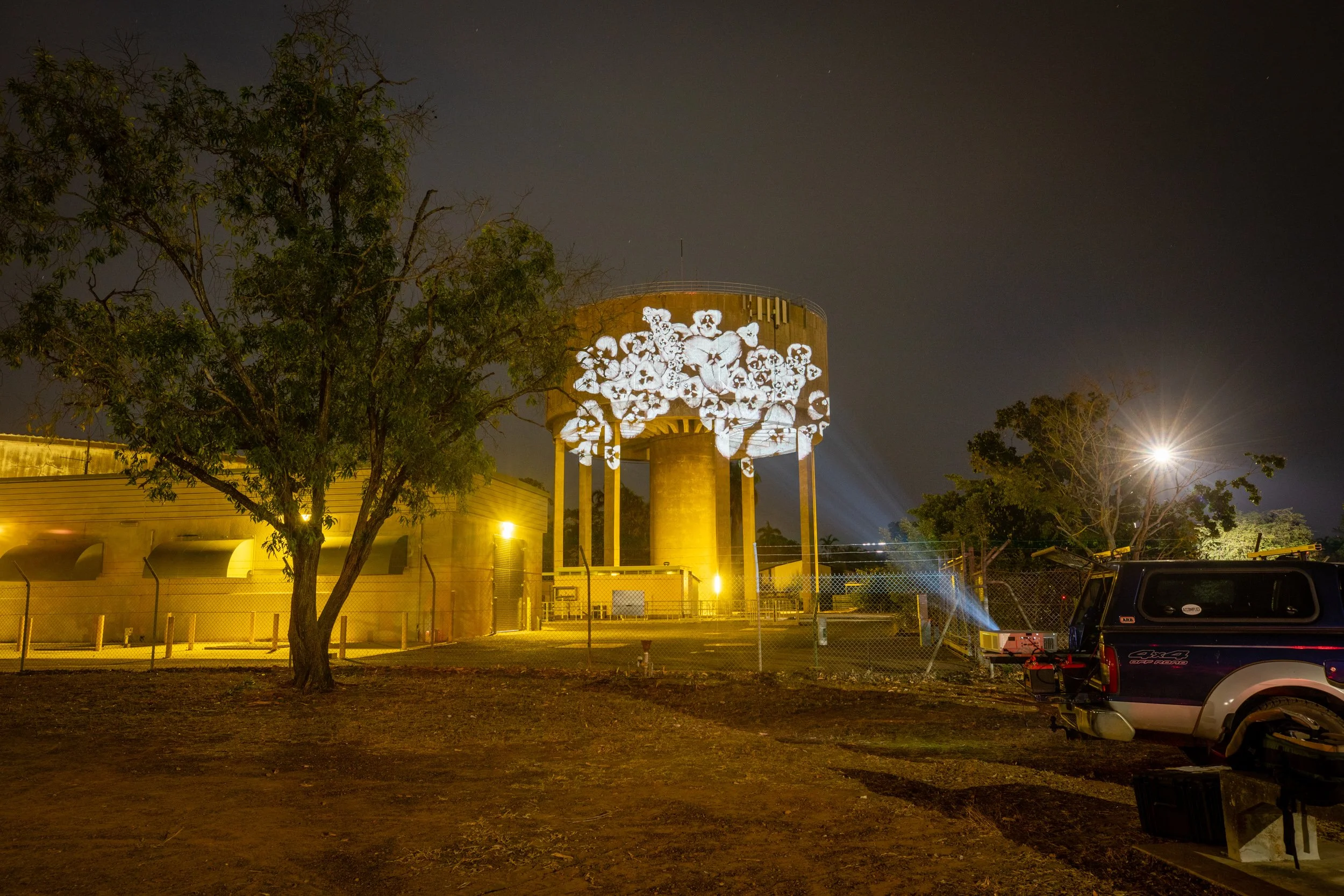




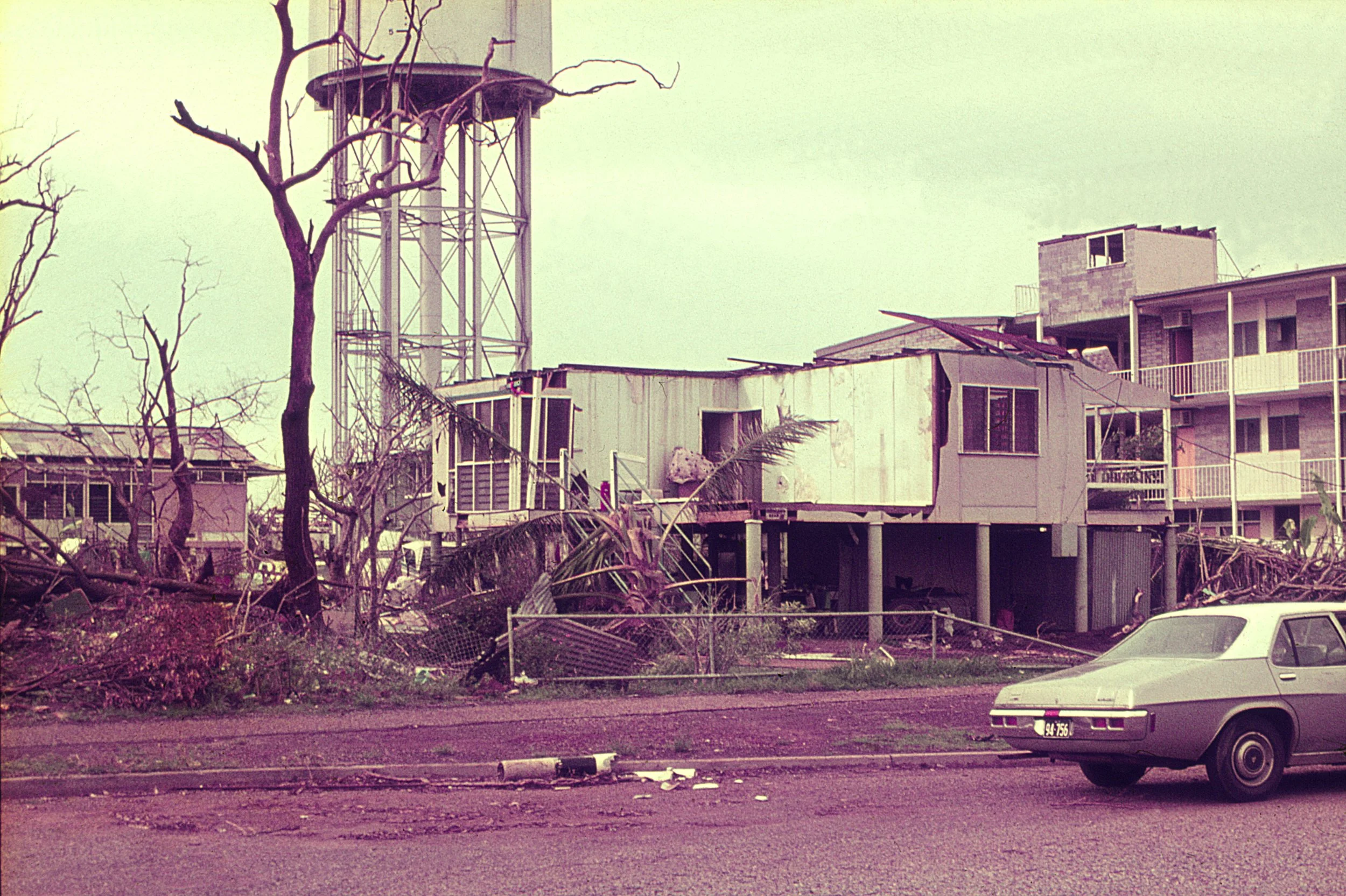



Botanicals
Through carefully choreographed movements, Matthew van Roden maps the porous connections between human and more-than-human life. Head, shoulders, knees, toes—petal, sepal, receptacle, stamen. Boundaries blur, skins and textures trade places and a curious dance unfolds, weaving together species in a multi-layered exchange. These gestures are brought to life across everyday sites in Darwin through a series of unexpected projections curated by Britt Guy, where surfaces, skins, and boundaries invite us to reimagine the relationships between the urban and natural worlds.
ABOUT THE ARTISTS
Matthew van Roden is an artist who thrives in the in-between. His queer creative practice explores the spaces between binaries—material and discursive, inside and outside, male and female, analogue and digital, nature and culture. In these gaps and slippages, van Roden reveals new possibilities and hidden connections.
Britt Guy, through her producing company ACCOMPLICE, curates bold, experimental interdisciplinary works that are uniquely shaped by the Top End. Drawing inspiration from the environment, seasons, and diverse communities of Larrakia Country, she brings these elements together in ways that invite fresh perspectives and deeper connections.
REFLECTIONS
There’s something about being among the botanicals that slows time, softens the edges of the day. Friends gather, sprawled on rugs that seem to anchor us to the earth, their colors and patterns blending into the greens and browns of the surroundings. We linger here, letting conversations meander like vines, unhurried, growing in unexpected directions.
Local botanists drift by like quiet guides, sharing their knowledge with a kind of reverence. They talk about roots and blooms, about plants that hold stories of resilience, adaptation, and connection. Their words carry the weight of the land, and suddenly a flower isn’t just a flower—it’s part of a larger world that breathes and pulses, like us.
This space invites something more than just observation—it feels like a call to presence. The soft rustle of leaves, the way sunlight filters through, the warmth of friends leaning close—all of it weaves together into a moment that feels both fleeting and eternal. It’s not just the plants that grow here; it’s us too, rooted in place, rooted in each other.
First, I heard:
‘Can we paint the water tower?’
‘Is there a way to hide the cracks of the tower?’
‘How can we transform the public space into an event space?’
‘What happens if it rains?’
The concept of the water tower, the BMX park, Moil as collaborators was foreign to many of our newly invited human collaborators. The offer was for the collaborators who identified as human to ‘stay with the trouble of the process’ (Haraway, 2016).
Then as artists began to let the tower clasp their test works as an active collaborator:
‘The lines produce a whole other dimension for my work’
‘It is so quiet here, giving my work the space to be contemplative’
‘Look at the stars above the tower!’
‘How will the local community share in the program?’
Over that evening, I observed the slow beginnings of the Water Tower Series, observing what collaborators (the artist, the water tower, and others) might need to be nourished. What might be useful to facilitate their unique processes of doing together and how to create space for the emergence of fantastical collective imaginings for the visible collaborators and those yet to make themselves visible?
Water Tower Series
REFLECTIONS
There’s something about water towers—they stand tall and steady, yet they hum with the quiet stories of their surroundings. Each tower feels like a sentinel, keeping watch over the communities they belong to, their presence both comforting and mysterious. I’ve spent countless hours with these structures, tracing the lines of their rust, feeling the texture of their weathered surfaces, and imagining the lives they’ve witnessed.
In the Water Tower Series, we brought these quiet giants into dialogue with artists, allowing them to transform from infrastructure to collaborators. They became canvases for light, sound, and story, reflecting the unique character of each place they inhabit. For me, the towers are more than their function; they’re kin, deeply entangled in the rhythms of the land, the skies, and the people who move around them.
These projects are as much about listening as they are about making—listening to the towers, to the spaces they occupy, and to the communities they belong to. They remind me that creativity doesn’t just emerge from us but flows through the relationships we nurture with the world around us. The towers, in their quiet resilience, teach me how to stand still and still be part of the movement.


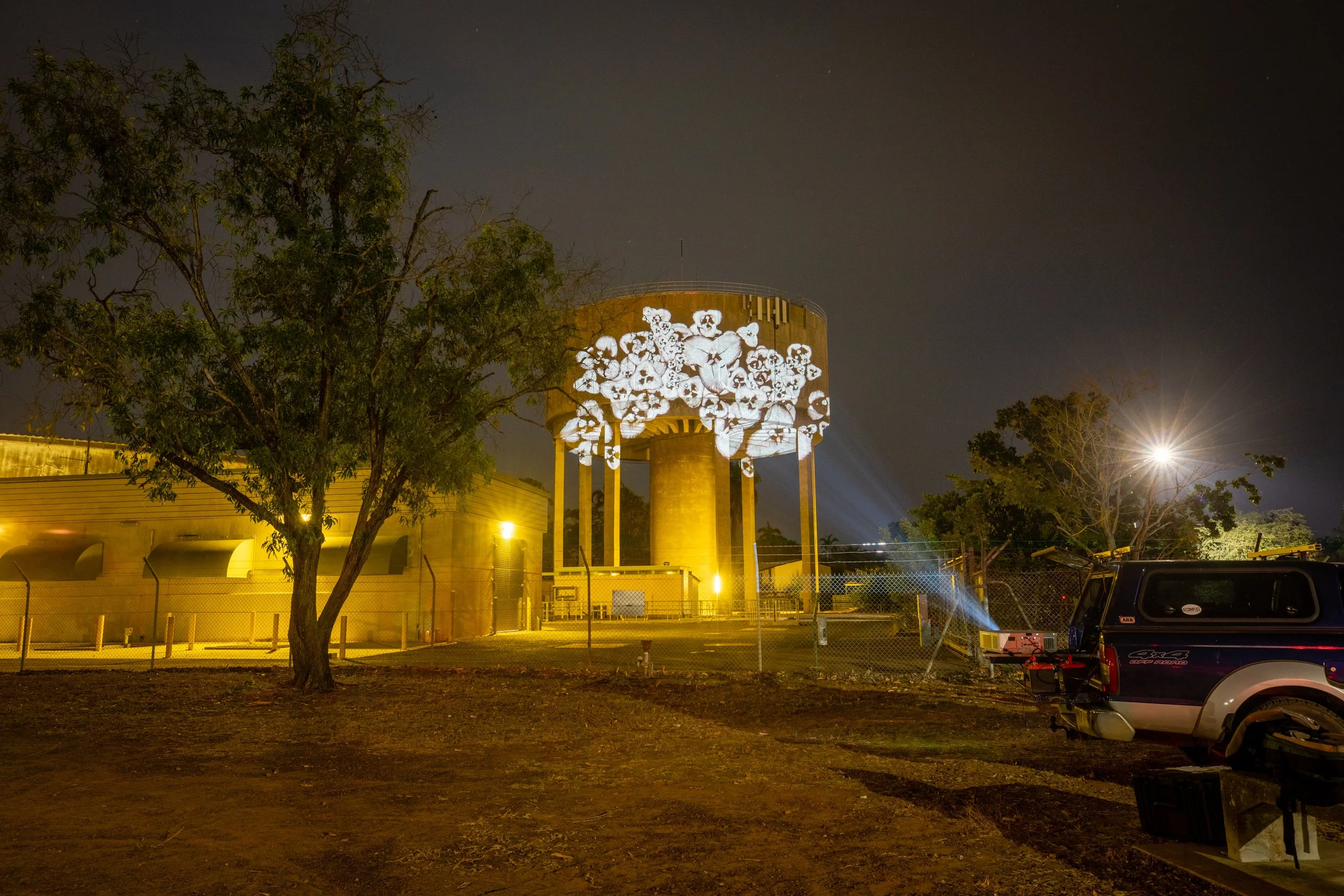


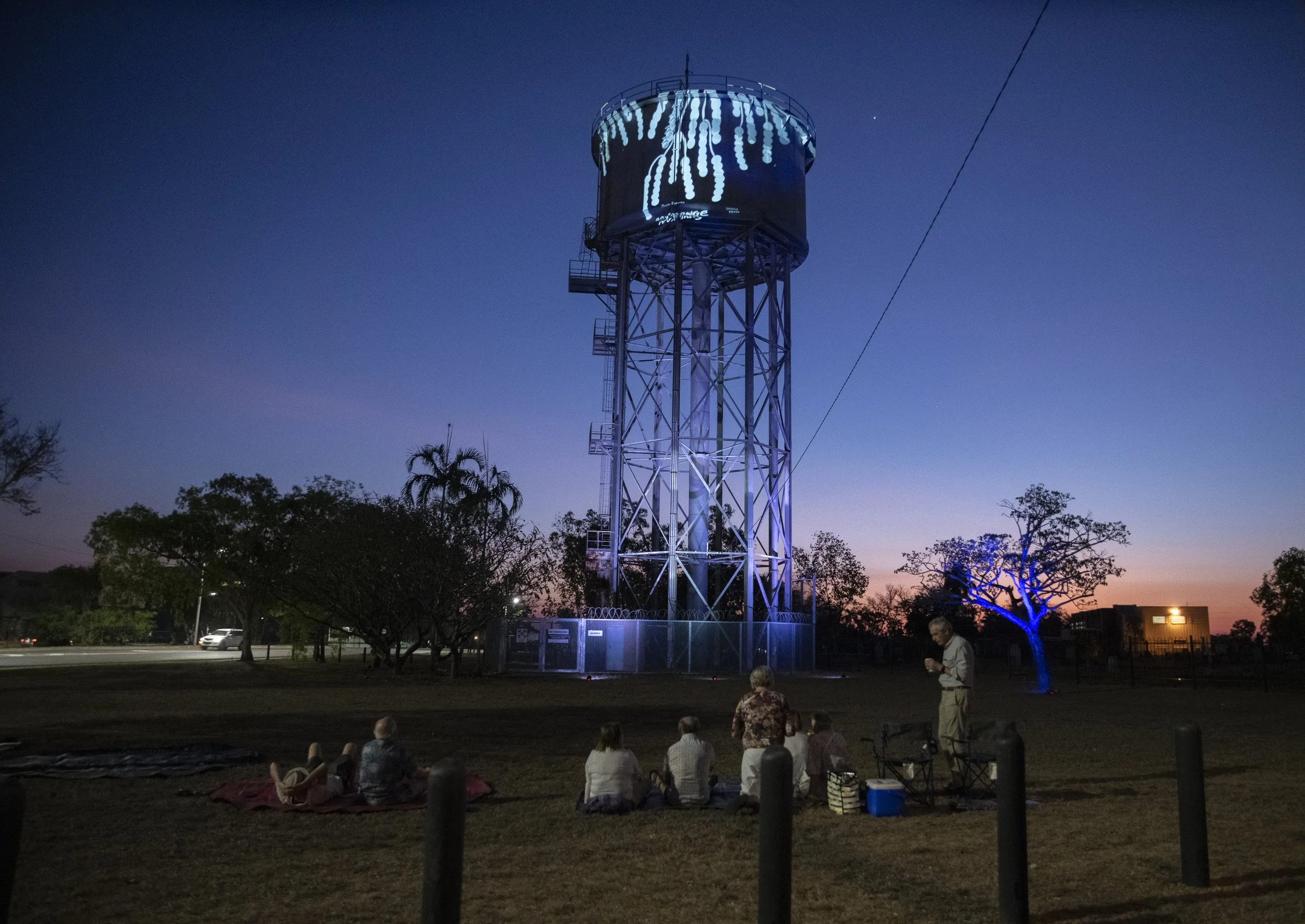



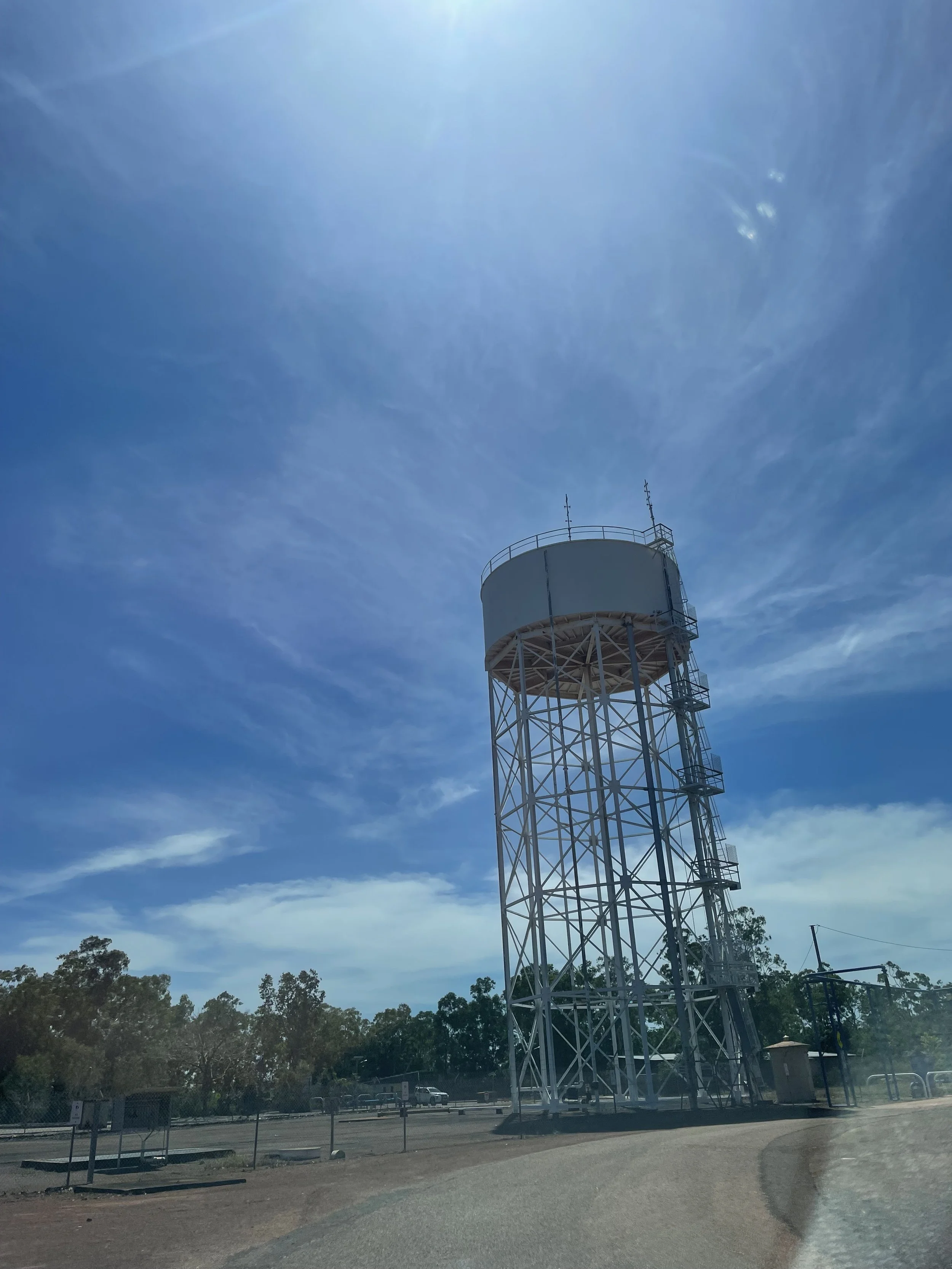

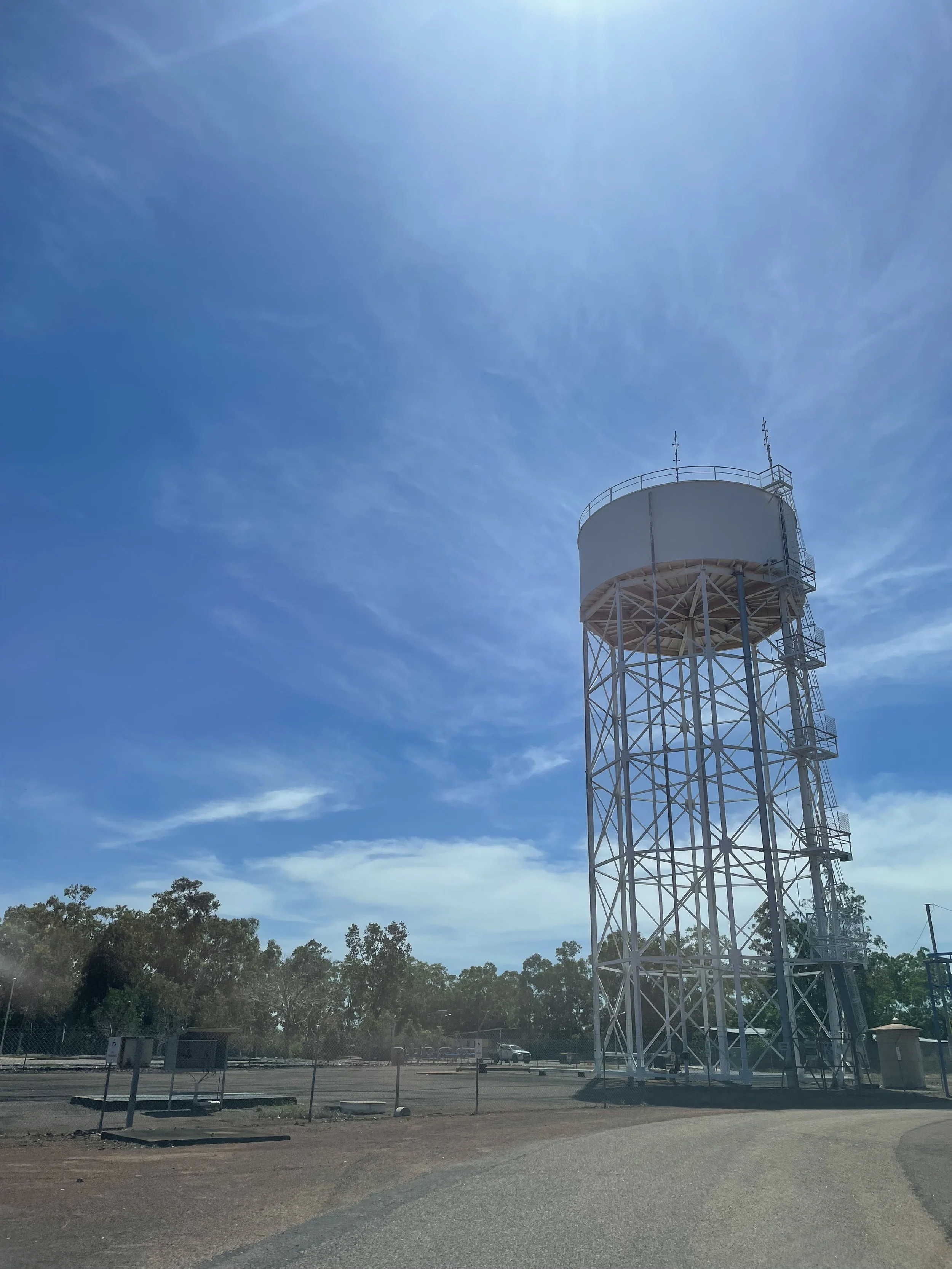
Exhibition Notes
Guy, B. 2019–2025, Photographs of Moil Water Tower [unpublished images], Larrakia Country.
Collection of archival images:
Northern Territory Archives Service 1959, Water tower, Northern Territory Government. Available at: https://hdl.handle.net/10070/804061 [Accessed 17 April 2025].Northern Territory Archives Service 1974, Water tower, Northern Territory Government. Available at: https://hdl.handle.net/10070/488604 [Accessed 17 April 2025].
Northern Territory Archives Service n.d., Water tower, Northern Territory Government. Available at: https://hdl.handle.net/10070/334054 [Accessed 17 April 2025].
Karlhuber, J. 1975, The suburb of Moil after Cyclone Tracy, Northern Territory Government. Available at: https://hdl.handle.net/10070/962309 [Accessed 17 April 2025].
Wright, A.A. & Wright, P.F. 1960, View from water-tower, Northern Territory Government. Available at: https://hdl.handle.net/10070/859074 [Accessed 17 April 2025].
a. van Roden, M. 2020, Grevillea [video], curated by B. Guy, Accomplice, Larrakia Country. Available at: https://vimeo.com/453127901 [Accessed 5 May 2025].
b. van Roden, M. 2020, Bougainvillea [video], curated by B. Guy, Accomplice, Larrakia Country. Available at: https://vimeo.com/453127573 [Accessed 5 May 2025].
c. van Roden, M. 2020, Eucalyptus Blossom [video], curated by B. Guy, Accomplice, Larrakia Country. Available at: https://vimeo.com/453127756 [Accessed 5 May 2025].
Guy, B. 2022, Journal entry and scribble [unpublished material], Larrakia Country.
Baker, C. & Lee, S. (hafleg) 2021, Water Tower Series [poster], Larrakia Country.
Tassone, P. 2021, Water Tower Series [photographs], Northern Territory Travelling Film Festival, Larrakia Country.
Guy, B. 2022, Photographs of Howard Springs water towers [unpublished images], Larrakia Country.

